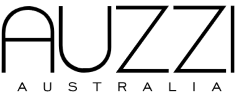Redefining Beauty Through Natural-Looking Cosmetic Injectables

Cosmetic injectables comprise a range of medically approved substances designed to enhance appearance through minimally invasive methods. These treatments include dermal fillers and neurotoxins, used to address issues such as wrinkles, facial volume loss, and contour irregularities. Their popularity continues to grow due to their effectiveness, quick recovery, and non-surgical nature. Clinics like The Cosmetic Studio Noosa offer expert guidance and application, helping individuals make informed choices while reinforcing the importance of consulting qualified professionals to ensure safe, natural-looking results.
Common Types of Cosmetic Injectables
Among the most frequently used cosmetic injectables are botulinum toxin and hyaluronic acid-based fillers. Botulinum toxin relaxes facial muscles to smooth dynamic wrinkles, whereas hyaluronic acid restores lost volume in areas such as the lips and cheeks. Other advanced options include calcium hydroxylapatite, which provides structural support, and poly-L-lactic acid, which gradually stimulates collagen production. Platelet-rich plasma (PRP) treatments further contribute to skin rejuvenation by using the patient’s growth factors to enhance texture and tone. These solutions are favoured for their subtle enhancements and minimal downtime.
The Shift Towards Subtle Enhancements
Modern beauty standards have moved away from conspicuous transformations in favour of more understated, refined results. Whereas past trends often celebrated dramatic changes, today’s approach prioritises natural aesthetics and the preservation of individual features. This transition reflects a broader cultural appreciation for authenticity and the notion that enhancing existing qualities often yields more elegant outcomes than masking them entirely.
Factors Driving This Change
Multiple influences are contributing to the preference for natural-looking enhancements:
- Technological Advancements: Continuous innovation in aesthetic medicine has improved precision, safety, and accessibility, enabling practitioners to deliver more controlled, nuanced outcomes.
- Evolving Consumer Behaviour: A growing desire for convenience, personalisation, and less invasive options aligns with broader lifestyle trends that favour efficiency without sacrificing quality.
- Social and Ethical Considerations: Increased awareness of sustainability, ethical practices, and wellness has shaped consumer preferences, with many now seeking treatments that align with these values.
- Media and Celebrity Influence: Public figures promoting subtle enhancements have made natural results aspirational. Their influence normalises discreet cosmetic work and encourages individuals to seek improvements that remain true to their identity.
Cultural Shifts and the Role of Individualism
Cultural trends have evolved towards celebrating personal identity and diversity in beauty. Social media platforms have amplified this focus, allowing individuals to express their aesthetic preferences and influence public perceptions. The result is a landscape where uniqueness is valued, and cosmetic treatments are chosen to reflect personal style rather than adhere to one-size-fits-all ideals.
Medical Advancements Supporting Natural Outcomes
Improvements in medical technology have made it possible to achieve refined results with minimal disruption. Minimally invasive techniques, enhanced imaging tools, and regenerative approaches such as PRP therapy now play a crucial role in producing outcomes that appear more natural while reducing recovery time and risk.
Benefits of Natural-Looking Cosmetic Injectables
Natural-looking cosmetic enhancements offer a range of advantages:
- Improved Confidence and Wellbeing: Subtle changes that complement rather than alter appearance often lead to enhanced self-esteem and a more positive self-image.
- Minimal Downtime: Most injectables require little to no recovery time, allowing individuals to return to their routine almost immediately.
- Lower Risk Profile: Compared to traditional surgical interventions, injectables involve fewer complications and shorter healing periods, making them a more appealing choice for many.
- Reversibility and Customisation: Certain fillers can be adjusted or reversed, giving patients the flexibility to modify results as their preferences evolve. The ability to tailor treatments to individual facial anatomy ensures more harmonious outcomes.
The Importance of Professional Expertise
Achieving natural-looking results hinges on the skill and qualifications of the practitioner. Selecting a certified professional with experience in aesthetic medicine is essential to minimise risks and maximise outcomes. Their understanding of facial anatomy, product selection, and placement technique is key to delivering enhancements that respect the natural proportions of the face.
Equally important is effective communication between the practitioner and patient. Clear discussions regarding expectations, potential risks, and desired outcomes help build trust and ensure that the treatment plan aligns with the individual’s aesthetic goals.
Emerging Trends in the Cosmetic Injectables Industry
The future of cosmetic injectables is shaped by a combination of technology, sustainability, and consumer awareness:
- Personalised Treatments: The integration of data and diagnostic tools allows for bespoke treatment plans tailored to individual skin types and facial structure.
- Sustainable Practices: As environmental considerations influence purchasing decisions, the aesthetic industry is gradually embracing more eco-conscious materials and methods.
- Digital Transformation: From virtual consultations to AI-assisted procedures, digitalisation is streamlining the patient experience and enhancing treatment precision.
These trends highlight the need for practitioners and clinics to remain agile, informed, and responsive to evolving demands to maintain credibility and competitiveness.
FAQs
Are cosmetic injectables safe for all skin types?
When administered by a qualified professional, cosmetic injectables are generally safe for most skin types. However, a thorough consultation is necessary to assess individual suitability and avoid adverse reactions.
How long do natural-looking injectables last?
Results vary depending on the product and individual factors, but most treatments last between 6 to 18 months. Regular maintenance sessions may be required to sustain the desired effect.
Can injectable treatments be reversed if the results are unsatisfactory?
Certain fillers, especially those based on hyaluronic acid, can be dissolved using specific enzymes, offering a degree of reversibility should the outcome not meet expectations.

